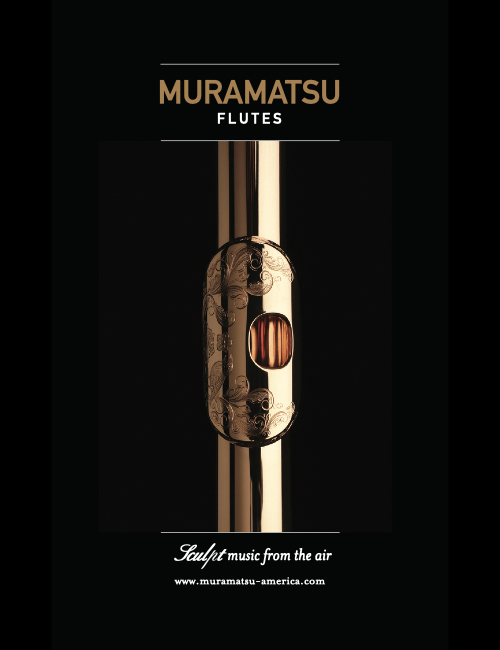Between 1936 and 1937 American composer Aaron Copland gave a series of 15 lectures on the topic What to Listen for in Music at the New School for Social Research in New York City. The lectures were written for the layman and music students. Later they were combined into a book which was first published in 1939 with a revision in 1957. In this book Copland discusses how we listen, the creative process, rhythm, melody, harmony, tone color, texture, and structure.
Copland suggests we listen to music on three planes: the sensuous plane, the expressive plane and the sheerly musical plane. On the sensuous plane, Copland writes, “The simplest way of listening to music is to listen for the sheer pleasure of the musical sound itself…It is the plane on which we hear music without thinking, without considering it in any way. One turns on the radio while doing something else and absent-mindedly bathes in the sound. A kind of brainless but attractive state of mind is engendered by the mere sound appeal of the music.” Some critics refer to this as passive listening.
Copland believes that all music has an expressive power. He explains there is difficulty in identifying what this expression is. He writes, “Is there a meaning to music? My answer to that would be, ‘Yes.’ And ‘Can you state in so many words what the meaning is?’ My answer to that would be, ‘No.’ Therein lies the difficulty.”
The third plane or the sheerly musical plane states that “music does exist in terms of the notes themselves and of their manipulation.” Listening while considering the notes, the rhythm, the harmony, the form etc. constitutes active listening.
Musicians are primarily concerned with the third plane or active listening. It is imperative to play the correct notes, in tune, in time, at the proper dynamic, and in the right style. However, learning to be an active listener while playing takes concentration and diligence. A fellow conservatory student often asked, “How much did you practice today?” Guilt was felt if I couldn’t reply four hours, six hours or eight hours. On reflection who has total concentration for four, six or eight hours – no one. A better question would have been, “What did you practice today? What were you listening for? Did you make progress or did you hit the wall?”
The role of teachers is to guide students through the process of what to practice, why it is important to practice this, practice techniques, and what to listen for in the finished product. Here are some ideas to accomplish more in less time.
The Lesson or Practice Session
Divide the time into three parts: warmups/theoretical technical material, etudes, and repertoire. If you have only an hour, then each segment receives 20 minutes. If you have three hours, then each topic receives an hour each.
Before beginning the warmups/theoretical technical material, most flutists find that a little mind/body work is advantageous. Whether you prefer yoga, Alexander Technique, Feldenkrais, or something else, the important thing is to be at your best when you pick up your flute for the day. I heard one pianist say as she was clearing up the breakfast dishes and doing a few household chores, she incorporated swerving gestures with her hands and arms. She was using the physical gestures of playing the piano with a beautiful sound while washing each dish or dusting a piece of furniture. Once her chores were completed, she sat at the piano and found that her arms already had experienced the gestures and relaxation of creating a beautiful sound. If you approach the flute while still tense from the day’s activities, the results of your practice will be less good. Come to the flute with relaxation, a clear mind, and with specific objectives to be accomplished.

Moving the Air
For wind players moving the air is of primary importance. Sometimes I begin with one note in the middle of the range. With each played note, I think of spinning the sound for a few seconds, increasing the length of each note until I reach 15 or 20 seconds. I listen for the attack making sure it is clean and not sharp. Too much fast air at the beginning of a note produces a sharp beginning that lowers to the pitch as the note progresses. Better to have the note in tune from the first sound to the end of the sound. Ending with a small taper is good too. Tapering can be done by making the aperture smaller during the diminuendo but remaining cognizant of continuing to move the air stream. Joseph Mariano taught pushing the end of the flute forward to keep the pitch up. Most longer notes will be played with a triangular shape – strong at the beginning and less strong at the end. This is especially true when playing with additional parts because when you have a long note, someone else has moving notes that should be heard more prominently. Decaying on longer notes allows the listener to distinguish the separate parts more easily. Listen carefully to the vibrato cycles. The vibrato starts at the beginning of the note and should be continuous with the same structure. Check your posture. The arms are hung as is the jaw. Practice these notes while looking in a mirror making sure your overall posture and demeaner is what you want.
Most flutists progress on to the first exercise in the Marcel Moyse De La Sonorite. This is probably the most famous tone exercise in the world. There are variations on this so do what pleases you as there is more than one way to accomplish what the exercise is about. Michel Debost told me that Moyse always intended this exercise to be played with vibrato. Why? Most flutists struggle with keeping the vibrato cycle going when changing fingering. Unfortunately, most slow or stop the vibrato when moving to the second note. Keeping the vibrato spinning takes a lot of concentrated listening. The other objective is this exercise is shown in the next lines where Moyse adds more notes into the slur. Here he is working on achieving a homogeneous sound throughout the range. This means the goal is to have one sound throughout the range – not a low octave buzz sound, a middle octave vibrant sound and a top octave screeching sound. Where the sound changes from a middle octave sound to a lower or upper octave sound should be so smooth that while it does change somewhat, the listener can’t tell exactly where.
Harmonics
Practicing harmonics offers the best payoff for improving the sound of anything you can practice. I prefer placing the right-hand on the barrel (name plate) of the flute to position the embouchure plate well into my chin. Begin with the left-hand harmonics beginning with low octave G and overblowing to produce a middle octave G and then a top octave D. Do these in every possible combination or order (middle, high, low or high, low middle, etc.). Make the slurring from one harmonic partial to the next sound as clear and easily produced as possible. This will fine tune your embouchure technique. Playing vibrato cycles on a harmonic is more difficult than playing them on a regularly fingered note. This extra resistance improves the formation of the vibrato cycle. Repeat using each of the left-hand notes (G, A flat, A, B flat, B, C, C#) as the fundamental before progressing to the right-hand harmonics (low octave F, E, E flat, D, D flat, C, B).
Theoretical Technical Material
This includes five-note major and minor patterns, scales of all kinds, thirds, sixths, arpeggios (major, minor, diminished, augmented) and seventh chords. Whether you use The Flute Scale Book by George & Louke, the Taffanel & Gaubert 17 Big Daily Exercises, or Vade Mecum by Walfrid Kujala, the content is similar. The goal is to eventually have all of these exercises by memory, in all keys at a fast tempo.
At a lesson with Julius Baker in 1963, he remarked to make it as a professional musician, the flutist should be able to play the T and G at quarter note = 144. Now almost fifty years plus I suggest that number has moved up to about 200. For the exercises in compound meter (6/8, 9/8, 12/8) the tempo is in the range of 88 to 96 for the dotted quarter. Baker was known not only for his incredible sound but for his outstanding technique.
When practicing this material ask, “What does my playing need and practice that?” Use various articulation patterns and marks, different rhythms, and a variety of dynamics. (See Michel Debost’s Scale Game in this issue.)
In practicing this material, remember there are two kinds of technique: slow technique and fast technique. Be sure to practice this material on a slow/fast rotation to develop articulate fingers. Remember the fingers move from the third joint back from the fingernail except for the left-hand index finger. Practicing with the metronome ticking on each note helps make the fingers articulate. The metronome may be set at very high speeds such as 200 or more. Another good practice technique is to alternate dynamics on the passage – playing one note forte and the next piano, then doing the opposite and finally playing the passage normally.
Scale-like passages are more easily played than ones with the intervals of the third, fourth, fifth, sixth and seventh because more fingers are required to move. In some cases, some fingers move up while others move down. Practicing intervals while watching in a mirror adds a visual element to the aural one. William Kincaid taught students to linger for a nano second on the note before a skip of a fourth or more. During this lingering, the embouchure was positioned for the next note. This contributes to a seamless slur. Robert Willoughby taught a technique where you fill in first chromatically a large interval, then fill in diatonically, and if possible, by triads. The idea was to realize the actual size of the interval by knowing how many notes it took to fill in. Willoughby’s students are easily recognizable by their execution of intervals which contributes to a beautiful, intelligent musical line.
Vocalises and Etudes
Instrumentalists have borrowed the idea of playing vocalizes from vocalists. They warm up by singing a simple pattern in a key and then repeating it on every step of their vocal range. The idea is to make each note as beautiful as possible and to create a homogeneous sound throughout the register. Instrumentalists also do this with the added idea of developing a technique thoughout the range. Explore vocalizes by Andre Maquarre, John Wummer, D. S. Wood, and M. A. Reichert. As you progress through all the keys, both major and minor, notice that some keys are easier to make sound beautiful and in tune than others. Conquering all the keys adds to the musical and technical product. It is possible to do drone work with some of these vocalizes. This improves intonation. Or, you could work with a friend and alternate back and forth by group (In a group of four notes, one plays 2341, and the other the next 2341). This helps develop the ability to match another flutist’s tone and intonation.
Flutists should always be reviewing old etudes and learning new ones. Many of the etude books have been written in all 24 major and minor keys. Learning to change from one key to the next successfully helps in playing accurately in chamber music and large ensembles. Most etudes focus on one technical issue and drill that issue throughout the entire etude. Before you launch in to play the entire etude, determine the technical issue the composer has presented so you are concentrating on the right objective. The greatest improvement in your playing will occur if you mark the phrases (or breathing places) and follow them exactly. This develops discipline in your overall playing and teaches how to use the air stream effectively. Luckily for flutists we have a huge repertoire of etudes – certainly enough for a lifetime. Some of my favorites are by Berbiguier, Andersen, Hugues, Altes, Kohler, Kummer, Furstenau, Soussmann, Paganini, Karg-Elert, Damase, Drouet, and Bach/Schindler.
At first, set a goal of how many etudes you can learn in a week. This may be only one or two. Be realistic with the time you have. Make a commitment that is easily kept. If you are experienced at working on etudes, it may be that your goal is by the day rather than by the week.
Repertoire
Always have something on your stand that you love to play. This will inspire you to keep practicing towards the reward. In selecting repertoire, select one piece from each of the style periods in which the flute existed: Baroque, Classic, Romantic and Contemporary. Also, when selecting repertoire, choose from the following genres – sonata, suite, concerto, and solo work – because each has its own set of intrinsic problems.
Before starting to play, study the score from the piano part. Then listen to several recordings while following along with the score. Some players feel listening to recordings too soon hampers creativity. However, learning to interpret is a skill to be developed so listening is a way to learn musicianship.
Mark the phrases and place breathing marks. The next steps are up to you. If it is a sonata, I may learn the recapitulation first, then the exposition, and lastly the development section. If you discover a place that is technically difficult, then stop and ask what is the problem. Then find etudes that work on this problem. If none exist, write your own. Otherwise, for the rest of your life, you will think, “Oh, here comes that difficult place at the top of page 3, lines 4 and 5.” This negative chatter impairs a spontaneous performance.
Take a piece of white computer paper for each page of the flute score. Place the sheet over the music and trace the dynamics only. Then looking at the dynamics, you will easily see where the high points in the music are and the places to back off. Too many flutists learn a work mf though out and find it difficult to ever master the dynamics as they should be performed. The most interesting players have a wide range of dynamics.
Recording yourself frequently helps develop a better sense of what you are playing. Listen for the obvious: clear attacks, bulbing (an unwritten crescendo on a longer note), evenness of fingers especially larger intervals, phrasing and musical line, dynamics, intonation, and a general sense of playing and communicating well.
Once you know what you are listening for in practicing, practice sessions become something to look forward to and enjoyed. Many of us as children hated practicing because we found it tedious. Imagine if we had known what to listen for other than playing the right notes at the right time.








